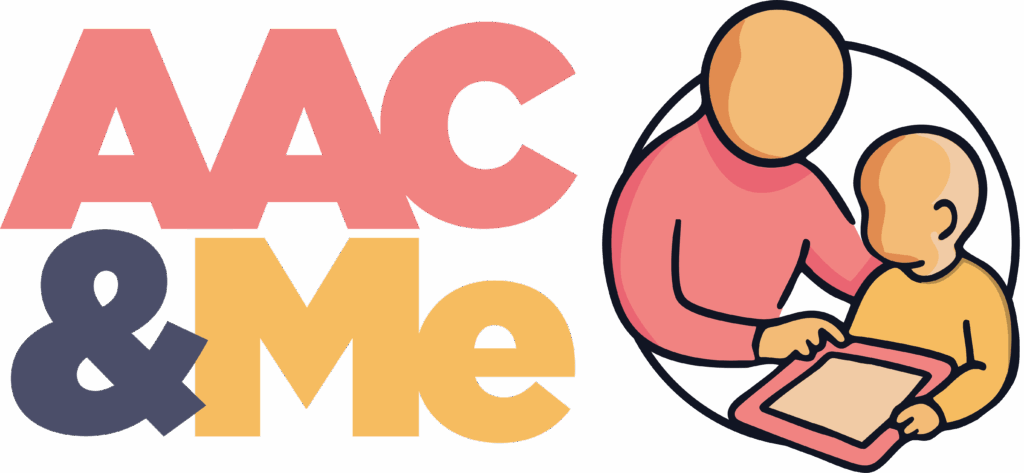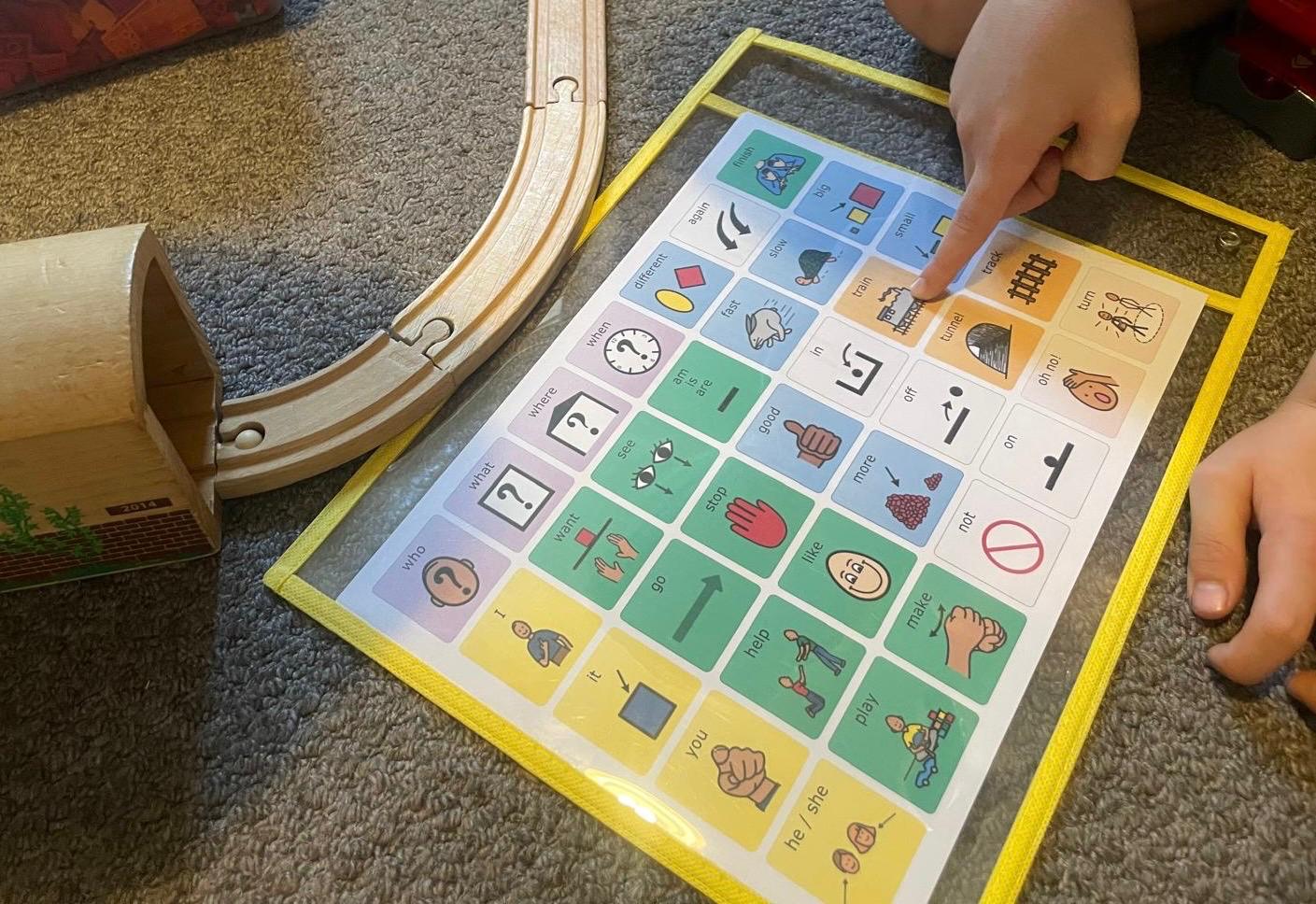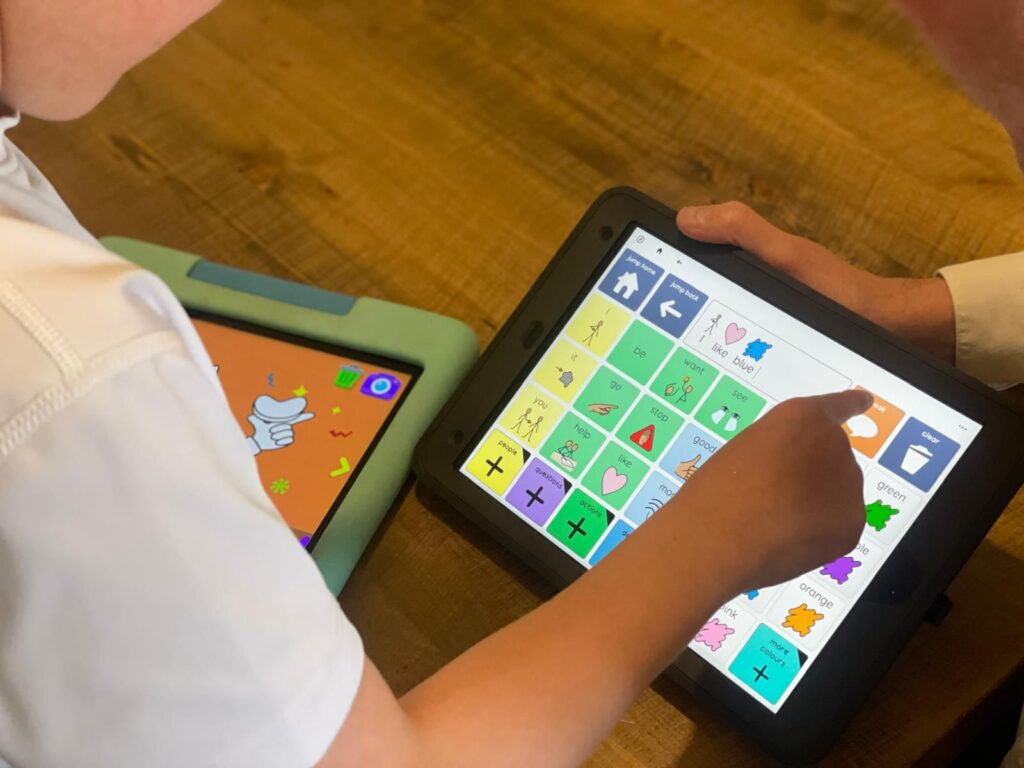How play-based language modelling supports early communication
When supporting early AAC users, it can be tempting to focus on questions and answers. But the real magic happens when connection comes first.
One of the most powerful strategies we can use during play is simply commenting as we go. In the Early Years Foundation Stage (EYFS), this is often called “running commentary” — narrating what a child is doing, seeing or showing interest in, using simple, familiar language. With AAC, this means pointing to words on a board or device as you talk.
Take the humble train set. A classic, open-ended toy — and the perfect setup for rich communication.
What It Looks Like
You sit beside a child pushing a train around the track and model:
- “go go go” (pointing to go)
- “fast train!” (pointing to fast and train)
- “oh no!” as it crashes (pointing to oh no!)
- “again?” when it’s back on the track
No quiz. No test. Just shared attention, joy and accessible language.
Why It Matters
This simple approach:
- Builds vocabulary in real situations
- Encourages turn-taking without pressure
- Strengthens understanding through repetition and routine
- Motivates, because the child is in control of the play
It’s also a perfect example of modelling without expectation — showing language on a device or board without requiring the child to use it in return.
Using the Train Boards
To make this even easier, we’ve created two printable train-themed low-tech AAC boards:
20-Cell version for early communicators
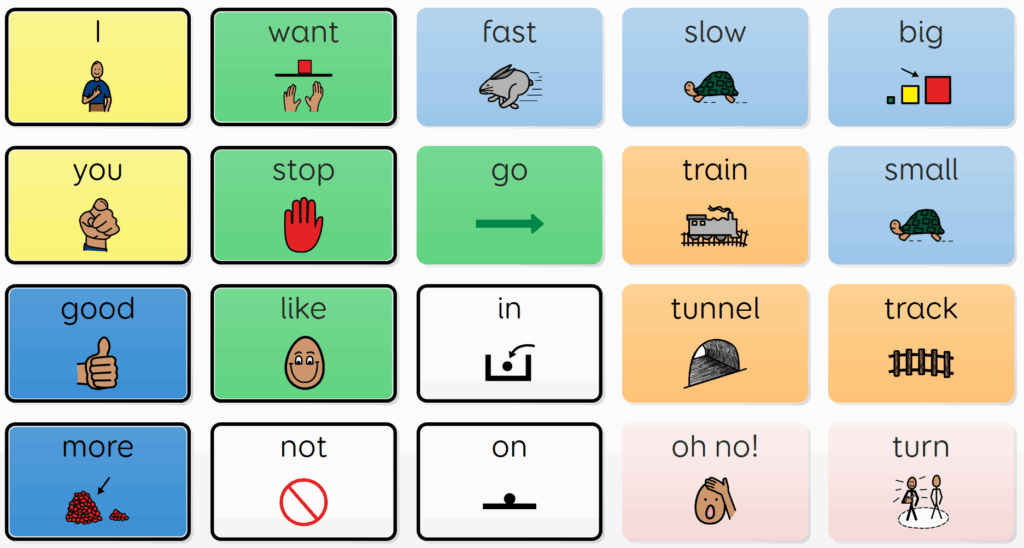
30-Cell version with extra fringe and question words
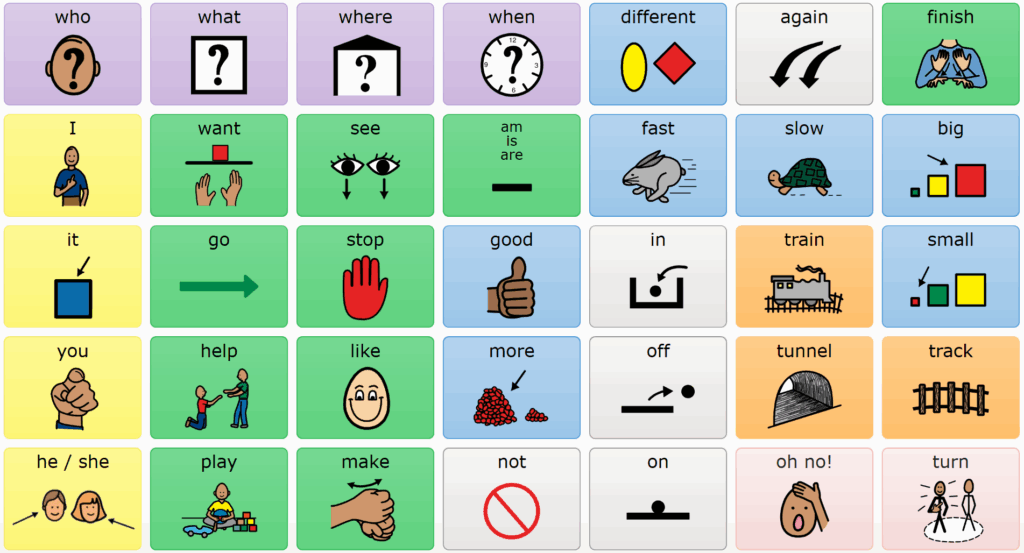
They’re designed to complement Super Core 30, but can spark language in any play setting.
Widgit Symbols © Widgit Software 2002-2025 www.widgit.com
Summary
Trains aren’t just toys — they’re tools for connection. AAC doesn’t have to mean formal sessions. It can be as simple as sitting down, following a child’s lead, and saying what you see, with symbols to support it.
AAC doesn’t need to feel complicated — it starts with play. Just play, point, and talk. The words will follow.
